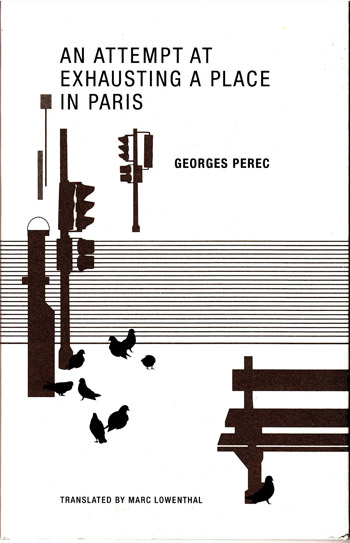Publishers and readers transform a writer’s reputation over time, sometimes without meaning to. A writer may take such liberties himself, by seizing his own career in order to send it someplace new.
Recent reviews of the first novel in more than 30 years by the American writer James Salter provide excellent evidence of this: while in the U.S. Army during World War II, Salter, born James Horowitz, decided that he didn’t want to be thought of as another Jewish writer from New York. In renaming himself he became a different kind of New York writer; someone, one imagines, he could live with more easily as he created the persona his readers and the writers influenced by him came to know and revere.
Publishers take similar liberties, leaving readers to either accept a writer as presented or to undertake a kind of literary sleuthing, to confirm who the author once was, and still might be, regardless of what the biographical materials on a book flap might say.
A recent translation of the major French Jewish author Georges Perec contributes to an ongoing renewal and revision of Perec’s legacy. An Attempt at Exhausting a Place in Paris (Wakefield Press), a minor work Perec completed before embarking on his 1978 masterpiece, known in English as Life: A User’s Manual. An Attempt is a tiny thing, really a reproduction of a note-taking process Perec embarked on in the Paris neighbourhood of Saint-Sulpice, which begins: “Outline of an inventory of some strictly visible things.”
The U.S. publisher of An Attempt suggests that the author’s goal was to record “everything to pass through his field of vision” as he sat at a succession of café tables in the venerable Parisian neighbourhood. But this is a far-fetched claim. To do this, Perec would have had to produce a 700-page book like Life: A User’s Manual. He would have had to sit at his post at Tabac Saint-Sulpice for many days. He would have had to supply an intensely detailed wash of daily and nightly events, a kind of screenplay, full of long shots, close-ups and deep atmospheric detailing, not the sketch of passing traffic, pedestrians and weather that makes up his “attempt” to exhaust his neighbourhood.
What passes under the eye of the author in the fall of 1974, some two years before he began the book that would make him a postmodern icon in Europe and North America? Japanese tourists; schoolgirls with bags on their back; men with baguettes; many, many “apple-green” Citroën 2CV’s; the 96 bus to Montparnasse; the 86 to Saint-Germain-des-Prés; pigeons travelling from ground to building cornice and back again; a “sort of double of Peter Sellers, with a very pleased expression on his face”; “grannies wearing gloves”; “a priest in a beret”; meter maids; “Four children. A dog. A little ray of sun. The 96. It is two o’clock.”
This phrase concludes An Attempt, and the very particularity of the book’s final anecdote is telling. The anonymous bus; the suggestion of sunlight; the meagerness of the details on offer; these things are, by no means, a catalogue of “everything to pass through” Perec’s “field of vision.”
And who is the author of these sketches? According to the American publishers of An Attempt at Exhausting a Place in Paris, Perec is: “(1936-1982)… a French novelist, essayist and filmmaker whose linguistic talents ranged from fiction to crossword puzzles… Winner of the the prix Renaudot in 1965 for his first novel Things, and the prix Médicis in 1978 for his most acclaimed novel, Life: A User’s Manual, Perec was also a member of Oulipo, a group of writers and mathematicians devoted to the discovery and use of constraints to encourage literary inspiration. One of their most famous products was Perec’s own novel, A Void, written entirely without the letter “e.”
Sounds like fun. But this is not the whole story. Perec’s parents were Polish-born Jews who arrived in France in the 1920s. They traced their ancestry to I. L. Peretz, whose connection to them was hidden by the erasure of a “z” in favour of a “c” (“z” might stand for Zamosc, Peretz’s Polish hometown). When the war broke out, Perec’s father was killed early, as a combatant on the French side facing German invasion. Perec was sent to be hidden near Grenoble in the French Alps, where his mother meant to join him, but she was arrested and deported to Auschwitz where she was murdered.
Knowing these details changes our picture of the man in the window, watching Paris in the fall of 1974. Knowing the difference a “c” makes in a name helps us think about the novelist who chose to write a book without “e’s.”
When Perec returned to Paris after the war, his parents dead, he found his neighbourhood in ruins. These facts do not mean that Jewishness underwrites everything Perec did; nor do they necessarily demand that a publisher of a work like An Attempt at Exhausting a Place in Paris dwell on what, to Perec’s readers, may be well-known facts. But one wants some inkling of the texture of an author’s self-image, his formative years, his place in European literature and culture, when opening his book. Early in An Attempt Perec notes that there are a great many things in Saint-Sulpice that are well-known – a church built by famous craftsmen, a fountain decorated with statues of Christian orators – but his intention is, he says, to describe “the rest… that which is not noticed.”
In this new incarnation Perec is as historyless as the pigeons and the schoolgirls, the grannies in gloves and the apple-green 2CV’s. The writer, against the backdrop of a square full of church statuary, becomes another native ornament, a passive cataloguer of Frenchness and weather patterns.
Norman Ravvin’s recent novel is The Joyful Child (Gaspereau Press). He is at work on a novel, The Typewriter Girl, set in Poland and in Vancouver.
